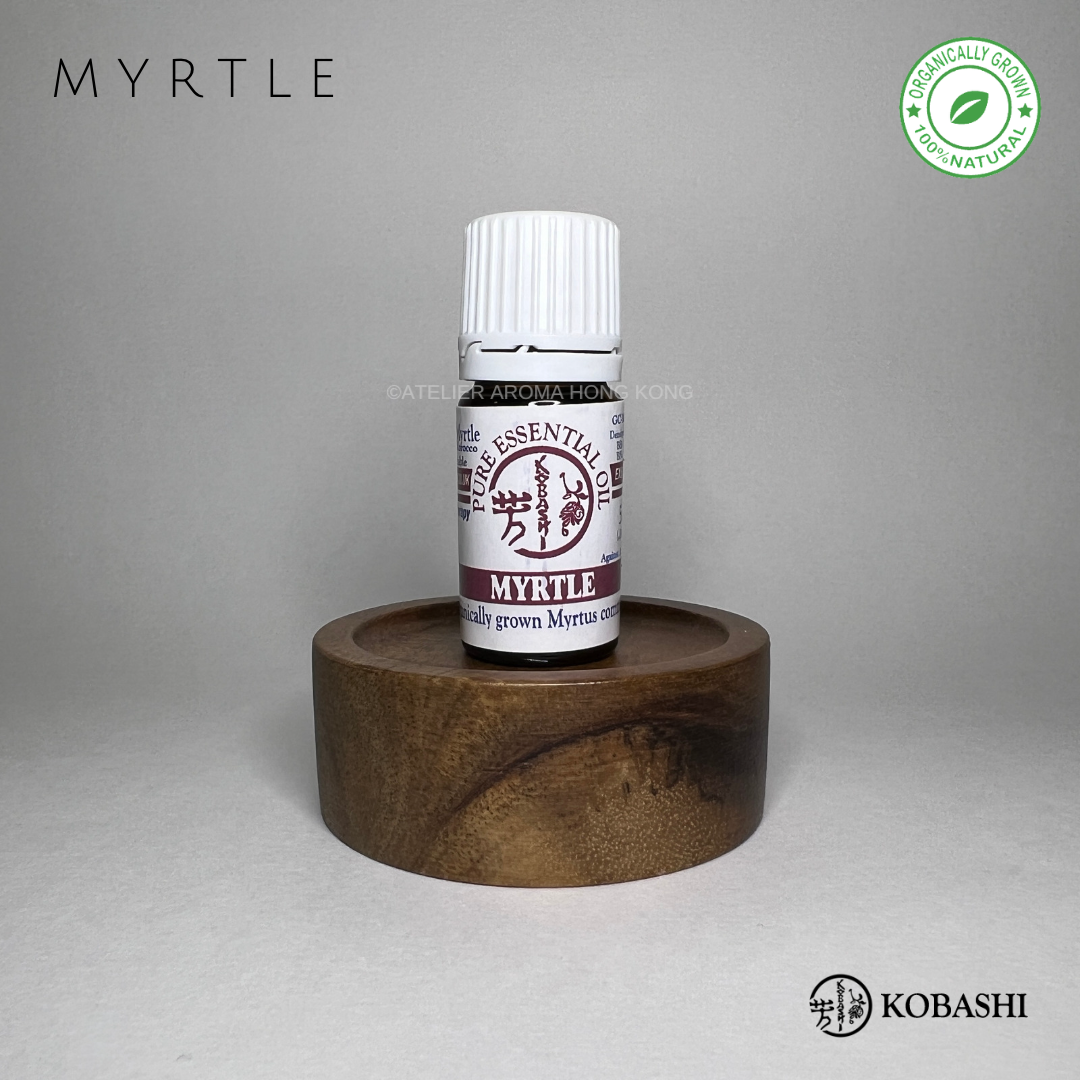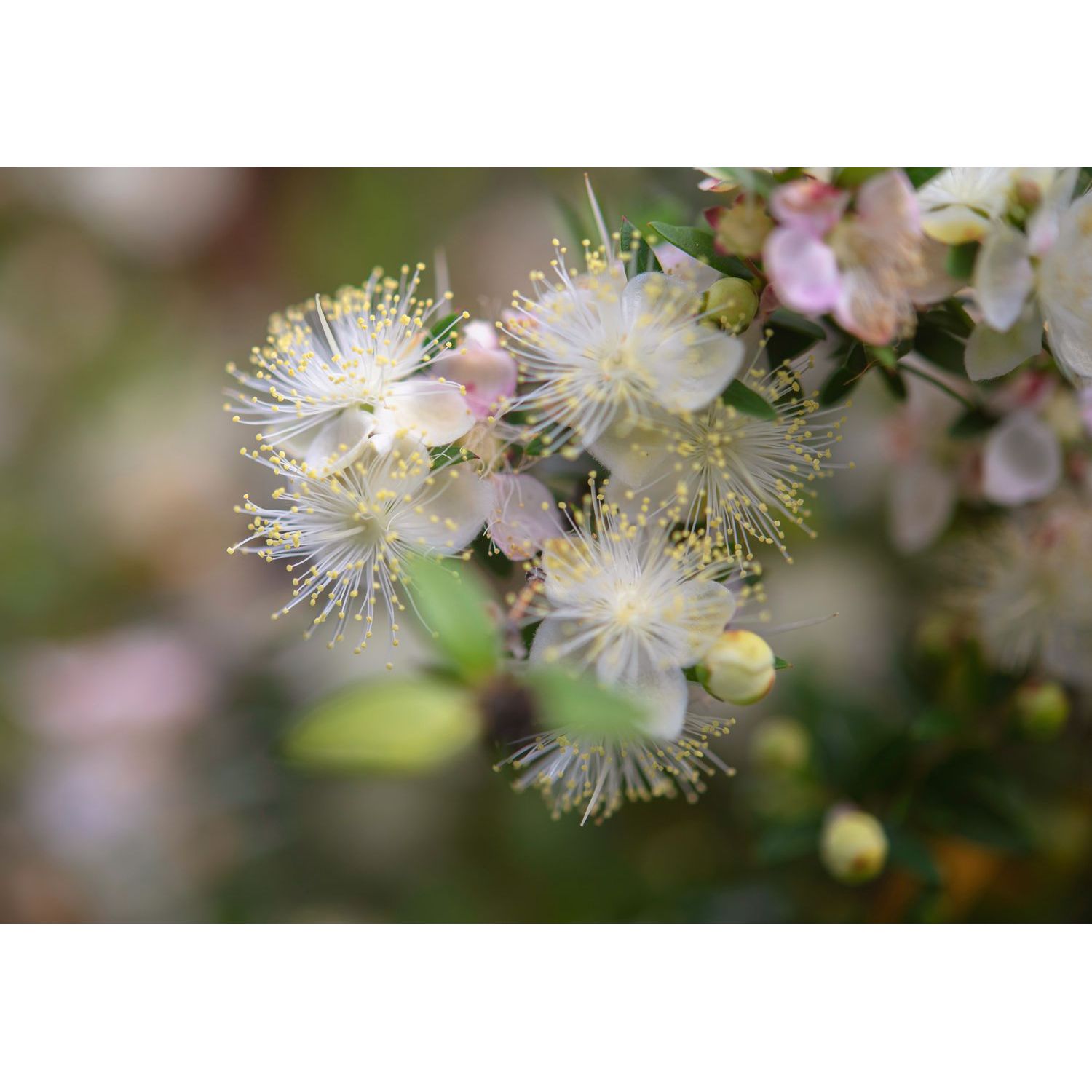Original information from Kobashi Official Website:
Vaporize to reduce airborne germs. Helpful in treating oily skin conditions.
LATIN NAME: myrtus communis.
SOURCE: Steam distilled from fresh leaves, twigs and flowering shoots
COLOUR: clear red/brown
ORIGIN: Morocco
AROMA: Camphoric, fresh, sweet, spicy with herbaceous notes
QUALITIES: A valuable winter oil. Vaporise to reduce airborne germs or add to massage oil for a clearing chest rub. It is an expectorant, and useful for treating colds, and catarrh. Patricia Davis in her book, An A to Z of Aromatherapy recommends the use of myrtle for children rather than eucalyptus, as it is a relatively mild and non stimulating oil. An extract of the leaves is used locally in North Africa to alleviate coughs and chest complaints, especially in children. It is also helpful in treating oily skin conditions. Because of its pleasant aroma myrtle is acceptable to both male and female and makes an excellent addition to a mild soap base for cleansing teenage problem skin.
In sixteenth century Europe the leaves and flowers were the major ingredients of a skin lotion known as 'angels water'. Used as a flavouring ingredient in food seasonings. The ancient Persians regarded the plant as holy, and in Egypt the women wore its blossoms together with pomegranate and lotus on festive occasions. The Greeks held it sacred to Aphrodite and the Romans to Venus.
Blends well with Clary sage, Lavender, Bergamot, Lime, Hyssop and the Spice oils.
A member of the Myrtaceae family, it is a large evergreen shrub or small tree generally 3-7 metres, with reddish brown branches and sharp glossy dark green pointed leaves, creamy white flowers are produced in the summer followed by small reddish-blue to violet berries. Both the leaves and flowers are fragrant. Native to North Africa but widely grown around the Mediterranean and Europe, often as a garden shrub.














